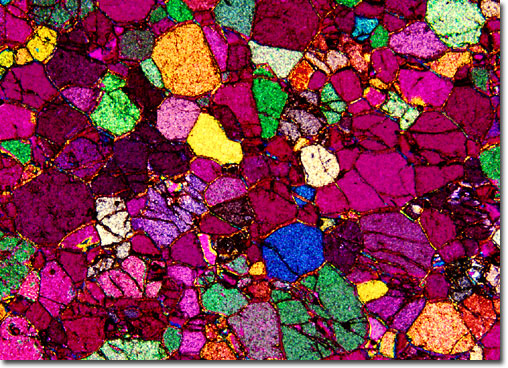Peridot
|
Peridot (pronounced pair-a-doe), or precious olivine, is a volcanic gemstone that was once treasured by native Hawaiians as the tears of the Goddess-of-Fire, Pele. The transparent green stone is a variety of the mineral olivine, a silicate found in many igneous rocks and a major constituent of the Earth's upper mantle. The crystal system is orthorhombic with a hardness slightly less than quartz. Small crystallites of peridot are often found in the basalt rocks created by volcanoes and have been found in iron-nickel meteorites called pallasites. Some specimens of extraterrestrial peridot have even been faceted and set into jewelry. The word peridot is thought to be derived from the French word peritot, which means unclear, probably because of the cloudy appearance of large stones, but could also have been taken from the Arabic word faridat which means gem. In either case, peridot has been mined as a gemstone for more than four thousand years and is mentioned in the Bible under the Hebrew name of pitdah. In ancient Egypt, peridot was mined on an island called Zeberget. Mining was done at night because legend said that peridot could not be easily seen during the day, but its pale iridescent green was easily illuminated by lamplight at night. It was for this characteristic that the Romans called peridot the "evening emerald." Peridot later was also often used to decorate medieval churches, and was probably carried back to Europe by the Crusaders. Large peridots, more than 200 carats in size, adorn the shrine of the Three Magi at the Cologne Cathedral. Peridot was considered to have the power to drive away evil spirits and that power was even more intense when the stone was set in gold. It was also said to strengthen the power of any medicine drunk from goblets carved from the gemstone. Although peridot is a common gem, today most are mined by Native Americans on the San Carlos Reservation in Arizona. Fine large peridot specimens are found in Myanmar (formerly Burma) and peridot is also mined in China and Sri Lanka. The beaches on the island of Oahu (Hawaii) are covered with tiny grains of the precious olivine, but they are much too small to cut into jewelry. In 1994, a new deposit of peridot was discovered in Pakistan, and these stones are now considered to be the finest ever seen. Many gem scholars agree that the tradition of birthstones arose from the Breastplate of Aaron described in the Bible (Exodus 28, 15-30). The breastplate was a ceremonial religious garment set with twelve gemstones that represented the twelve tribes of Israel and corresponded with the twelve signs of the zodiac and the twelve months of the year. There are many different birthstone lists, however, and some argue that they should be assigned by astrological sign and not month. Peridot is the birthstone for August and the zodiac sign Leo. |
© 1995-2025 by Michael W. Davidson and The Florida State University. All Rights Reserved. No images, graphics, software, scripts, or applets may be reproduced or used in any manner without permission from the copyright holders. Use of this website means you agree to all of the Legal Terms and Conditions set forth by the owners.
This website is maintained by our
|
